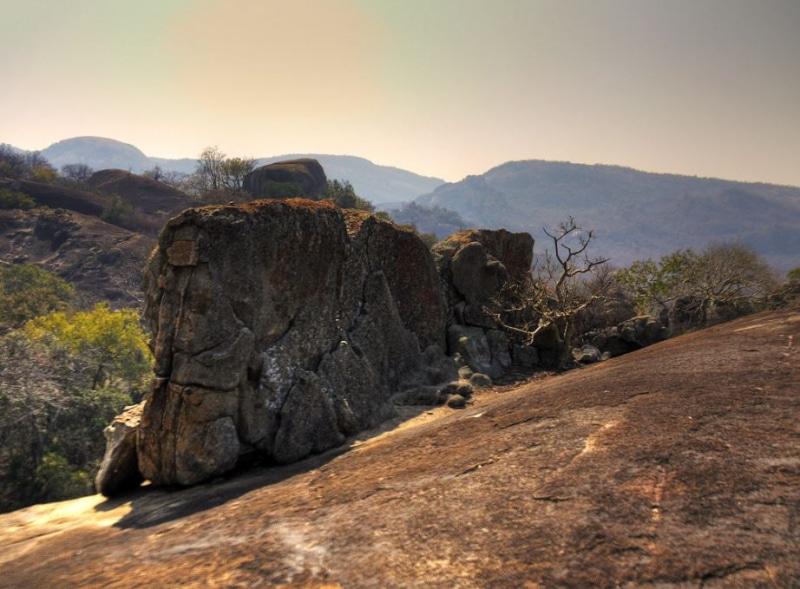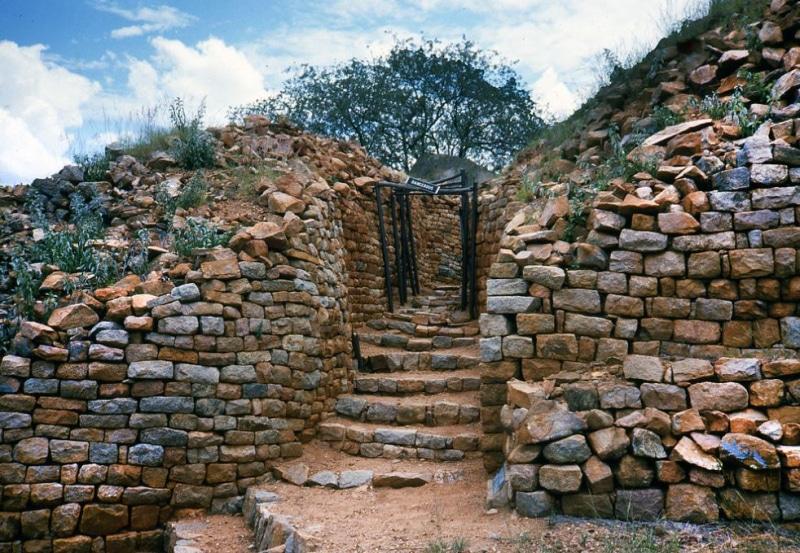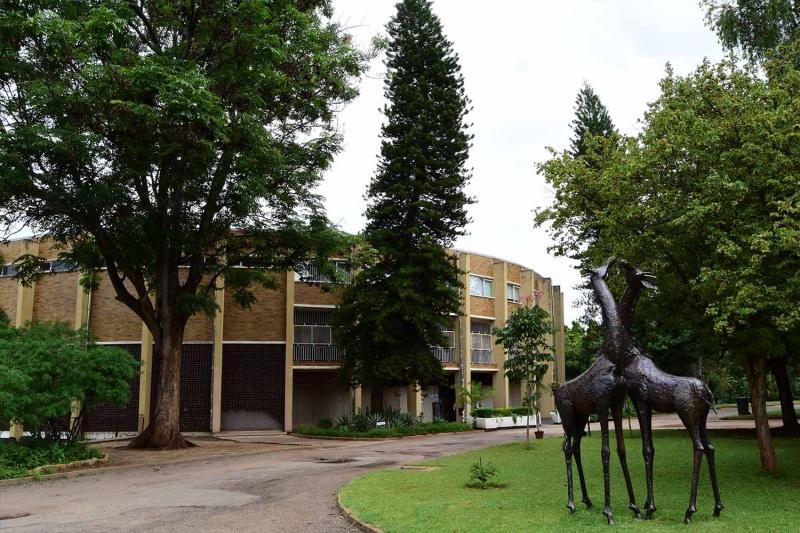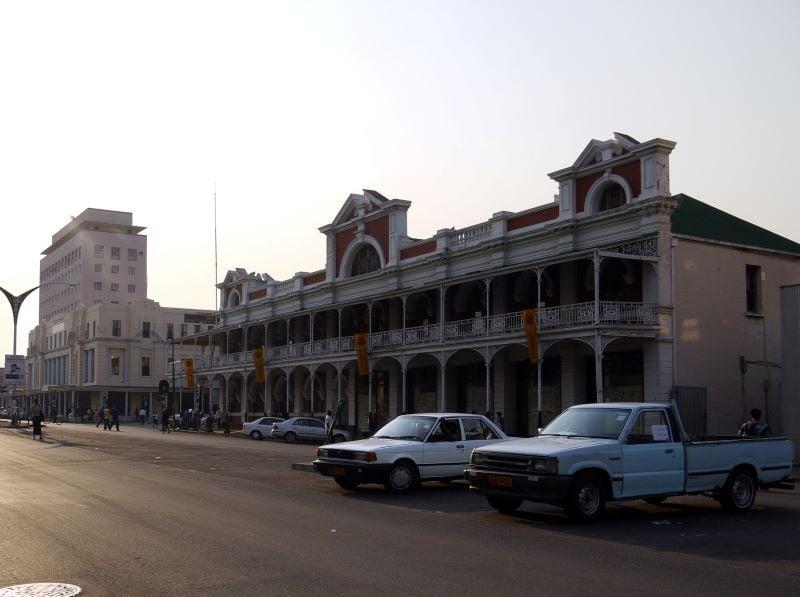ParksandGardens, Zimbabwe

Removed from Unnamed collection
Matobo Hills 
Huge granite masses – seamed, split, shaped and sculptured by time and the elements – form an array of giant whalebacks and castellated kopjes that cover 3000 square kilometres of Matabeleland South Province. Much of the country’s history has been written and played out within the confines of the Matobo Hills – from the time thousands of years ago when ancient bushmen used the granite faces as a canvas for their unique and extraordinary art, to more recent times, when black and white met in war and peace.
These are the Matobo Hills, located south of Zimbabwe’s second-largest city, Bulawayo. Forty thousand years ago the caves and crevices carved out of these rocks became home to Zimbabwe’s earliest inhabitants, the “San”. Twenty thousand years later “San” artists began painting on the walls of caves and rock shelters, using special pigments and natural minerals that have survived the onslaught of climate and time. https://www.zimbabwetourism.net/listing/matobo-hills/#
Map

Removed from Unnamed collection
Old Bulawayo 
The story of the Ndebele from when they are forced out from present-day South Africa by a coalition of Afrikaners, Griquas and Zulu to the establishment of modern-day Bulawayo can appear confusing.
During Mzilikazi’s reign as King there are four different capitals (Gibxhegu, Mahlokohloko, Inyathi and Mhlahlandleia) He was succeeded by Lobengula who established a new Gibxhegu and then renames it koBulawayo (this is the where the Site Museum is situated) and finally Umhlabathini, or the second koBulawayo, the site of modern-day State House. This was in keeping with tribal custom; the royal towns of Matabele kings were never intended to be permanent and whenever a King died, the capital moved and the old royal town was burned. http://zimfieldguide.com/bulawayo/kobulawayo-or-old-bulawayo-1870-%E2%80%93-1881-and-indaba-tree
Map

Removed from Unnamed collection
Khami Ruins 
Khame Ruins are perhaps the least known of Zimbabwe's five World Heritage sites. Situated just 22 kilometres outside of Bulawayo, Khame was the capital of the Torwa state between 1450 and around 1683, after the capital at Great Zimbabwe in Masvingo was abandoned. It was a trading centre, as attested by the artefacts discovered here and the ruins are not places of defence but were prestige buildings designed to demonstrate Torwa wealth.
Human evidence at the site can be traced back to the Early Stone Age, approximately 0.4 to 1.4 million years ago. http://zimfieldguide.com/bulawayo/khame-previously-khami-ruins-unesco-world-heritage-cultural-site
Map

Removed from Unnamed collection
Natural History Museum of Zimbabwe 
The Natural Museum of Zimbabwe located in the Centenary Park in Bulawayo, was built in 1962, and in 1982 all the natural science collections were moved here and it was renamed the Natural History Museum of Zimbabwe.
With its stunning displays and valuable research, collections are the best museum in Southern Africa and rank fourth in size among the museums of Africa.
It is an impressive circular building with nine public display galleries, a lecture hall with a seating capacity of 120 people, a cafeteria, and eight research departments with substantial study collections and ongoing research in the following disciplines: Arachnology and Invertebrates; Entomology; Ornithology; Mammology; Herpetology; Ichthyology; Geology and Paleontology; Archaeology and Monuments. https://naturalhistorymuseumzimbabwe.com/
Map

Removed from Unnamed collection
Bulawayo National Art Gallery 
Housed in one of the country’s finest monuments, the National Gallery in Bulawayo is a unique facility, which holds invigorating and challenging exhibitions. Douslin House where the Gallery is housed in more than 100 years today. Its architectural splendor makes evident the gallery’s own goal of aesthetic appreciation and artistic aim.
As custodians of a growing Zimbabwean heritage, Art Gallery is tasked with the creative and intellectual discipline to select, to nurture and commend outstanding works of visual art, to select and display pivotal works, to generate and improve upon existing talent, to train and develop artistic skills, to educate, to empower, to mediate, and mostly to celebrate.
Freed from some of the influences and concerns, which dominate other provinces in Zimbabwe, the unique thrust of the National Gallery in Bulawayo is its desire to dissolve barriers between art and its audience, to establish a consistent dialogue and intimacy. The personality of this gallery is embodied in its transparent windows in the Lower Gallery, which allow passers-by to view current exhibitions while going on about their daily business. http://www.nationalgallerybyo.com/
Map

